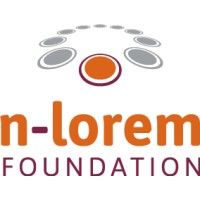预约演示
更新于:2025-05-07
Leukodystrophy, Demyelinating, Adult-Onset, Autosomal Dominant
常染色体显性遗传性成人脱髓鞘性脑白质病变
更新于:2025-05-07
基本信息
别名 ADLD、Adult-onset autosomal dominant demyelinating leukodystrophy、Adult-onset autosomal dominant leukodystrophy + [6] |
简介 A rare, slowly progressive neurological disorder involving central nervous system demyelination, leading to autonomic dysfunction, ataxia and mild cognitive impairment. |
关联
1
项与 常染色体显性遗传性成人脱髓鞘性脑白质病变 相关的药物靶点 |
作用机制 LMNB1 modulators |
在研适应症 |
非在研适应症- |
最高研发阶段临床1/2期 |
首次获批国家/地区- |
首次获批日期1800-01-20 |
4
项与 常染色体显性遗传性成人脱髓鞘性脑白质病变 相关的临床试验NCT06816498
An Open-label, Single-center, Single-participant Study of an Experimental Antisense Oligonucleotide Treatment for a Patient with LMNB1 Mutation Associated Autosomal Dominant Leukodystrophy (ADLD)
This research project entails delivery of a personalized antisense oligonucleotide (ASO) drug designed for a single participant with Autosomal Dominant Leukodystrophy (ADLD) due to LMNB1 mutation
开始日期2025-02-01 |
申办/合作机构  n-Lorem Foundation n-Lorem Foundation [+1] |
NCT02699190
LeukoSEQ: Whole Genome Sequencing As a First-Line Diagnostic Tool for Leukodystrophies
Leukodystrophies, and other heritable disorders of the white matter of the brain, were previously resistant to genetic characterization, largely due to the extreme genetic heterogeneity of molecular causes. While recent work has demonstrated that whole genome sequencing (WGS), has the potential to dramatically increase diagnostic efficiency, significant questions remain around the impact on downstream clinical management approaches versus standard diagnostic approaches.
开始日期2017-01-06 |
NCT03047369
The Myelin Disorders Biorepository Project and Global Leukodystrophy Initiative Clinical Trials Network
The Myelin Disorders Biorepository Project (MDBP) seeks to collect and analyze clinical data and biological samples from leukodystrophy patients worldwide to support ongoing and future research projects. The MDBP is one of the world's largest leukodystrophy biorepositories, having enrolled nearly 2,000 affected individuals since it was launched over a decade ago.
Researchers working in the biorepository hope to use these materials to uncover new genetic etiologies for various leukodystrophies, develop biomarkers for use in future clinical trials, and better understand the natural history of these disorders. The knowledge gained from these efforts may help improve the diagnostic tools and treatment options available to patients in the future.
Researchers working in the biorepository hope to use these materials to uncover new genetic etiologies for various leukodystrophies, develop biomarkers for use in future clinical trials, and better understand the natural history of these disorders. The knowledge gained from these efforts may help improve the diagnostic tools and treatment options available to patients in the future.
开始日期2016-12-08 |
申办/合作机构 |
100 项与 常染色体显性遗传性成人脱髓鞘性脑白质病变 相关的临床结果
登录后查看更多信息
100 项与 常染色体显性遗传性成人脱髓鞘性脑白质病变 相关的转化医学
登录后查看更多信息
0 项与 常染色体显性遗传性成人脱髓鞘性脑白质病变 相关的专利(医药)
登录后查看更多信息
283
项与 常染色体显性遗传性成人脱髓鞘性脑白质病变 相关的文献(医药)2025-03-01·Journal of Voice
Symptom Expression Across Voiced Speech Sounds in Adductor Laryngeal Dystonia
Article
作者: Doyle, Philip C ; Marks, Katherine L ; Stepp, Cara E ; Frankford, Saul A ; Feaster, Taylor F
2025-03-01·Journal of Voice
Study of Glottal Attack Time and Glottal Offset Time in Neurogenic Voice Disorders During Sustained Phonation
Article
作者: Naghibolhosseini, Maryam ; Zayernouri, Mohsen ; Deliyski, Dimitar D ; Henry, Trent M ; Zacharias, Stephanie R C
2024-12-01·Neurobiology of Disease
The effect of a dominant kinase-dead Csf1r mutation associated with adult-onset leukoencephalopathy on brain development and neuropathology
Article
作者: Irvine, Katharine M ; Pal, Reiss ; Irvine, Katharine M. ; Summers, Kim M. ; Mabbott, Neil A ; Bradford, Barry M ; Hume, David A ; Woodruff, Trent M. ; Woodruff, Trent M ; Carter-Cusack, Dylan ; Mabbott, Neil A. ; Khan, Nemat ; Pridans, Clare ; Stables, Jennifer ; Summers, Kim M ; Hume, David A. ; Bradford, Barry M. ; Taylor, Isis
分析
对领域进行一次全面的分析。
登录
或

生物医药百科问答
全新生物医药AI Agent 覆盖科研全链路,让突破性发现快人一步
立即开始免费试用!
智慧芽新药情报库是智慧芽专为生命科学人士构建的基于AI的创新药情报平台,助您全方位提升您的研发与决策效率。
立即开始数据试用!
智慧芽新药库数据也通过智慧芽数据服务平台,以API或者数据包形式对外开放,助您更加充分利用智慧芽新药情报信息。
生物序列数据库
生物药研发创新
免费使用
化学结构数据库
小分子化药研发创新
免费使用
